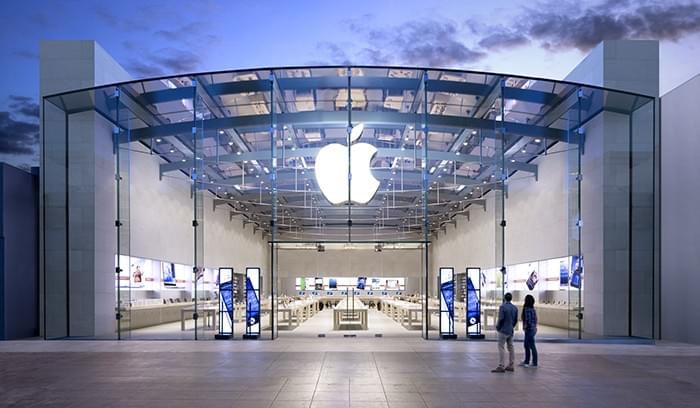Apple’s keynote events are undeniable fun. They’re big, they’re secretive, and they’re full of tech spectacle. Unfortunately, they’re nearly irrelevant for the majority of businesses. While Apple’s technology eventually makes its way into company offices – MacBooks, iPads, and iPhones are prime examples – the initial focus is always on the consumer. Apple’s business initiatives are relegated to mere press releases – such as the recent announcement of their partnership with IBM (which is pretty big news, in case you missed it).
On the surface, their latest event seems to fall into this pattern. While the Apple Watch, updated iPhones, and Apple Pay look great for consumers, what’s the immediate business takeaway? In order to gauge potential impact, we looked at past Apple technology, and how it eventually influenced the workplace, then extrapolated some of those trends for the products just announced. The new iPhones are easy enough – they’ll replace user’s current iPhones over the next one to two years. However, the Apple Watch and Apple Pay offer new possibilities. Here are our best predictions for how this tech will impact businesses, in the short and long-term.
Apple Watches Will Infiltrate the Workplace
This has occurred with almost every Apple device, despite the initial use-cases being consumer-focused. The iPhone was criticized for its lack of a physical keyboard (then thought to be a business necessity), and now controls the enterprise market. The iPad was dismissed as a device meant only for media-consumption (not creation), but is now appearing in more and more companies. There’s no reason to think the Apple Watch will not follow this trajectory.
The field of mobile device management has only become prominent in the last decade, yet is already set to undergo a transformation. While workplaces are still debating how to best implement BYOD policies (not to mention the cost-benefit analysis), wearable devices will soon be entering the office as well. The Apple Watch is not a mere extension of the iPhone either – it will have dedicated apps and unique capabilities beyond fitness tracking.
From the specs listed online, it appears that the Apple Watch will use data from a user’s iPhone, at least for most updates. The watch can also transfer information back to the phone (presumably), such as fitness data and messages. This could potentially introduce a new vulnerability into networks. Since there’s likely to be an ongoing connection between the phone and watch for most of the day (and many user’s personal phones access company networks), IT admins will be wise to try and monitor the amount of such smart devices in the workplace.
Office etiquette may eventually shift as well. It’s currently frowned upon for employees to have phones out during meetings, but no one blinks at someone wearing a watch. As soon as people start reading text messages or viewing email updates from their wrists, this perception will change.
Apple Pay Will Finally Disrupt Retail Payments
Wearable devices have been embraced by fitness enthusiasts, but are largely unproven as an actual market with mass appeal. The success or failure of the Apple Watch will go a long ways towards determining this. Apple Pay on the other hand is entering perhaps one of the most well established markets in the world – payments. Leaving aside the major credit cards and banks, companies such as PayPal, Square, and Loop are all vying to become consumer’s go-to mobile wallet. So far, none of them have established a foothold. This is because most digital wallets are more difficult to use than the technology they’re trying to replace.
Apple Pay looks to be the first solution that’s simpler than swiping a credit card. Apple already has millions of credit cards on file through iTunes, which reduces the barrier to entry for consumers. The simplicity of holding your phone near a payment terminal, without having to open a separate app or enter a password, is currently unrivaled.
The system uses the same EMV technology as chip-and-pin credit cards, which US credit card companies are scheduled to adopt by late 2015. The increased consumer interest generated by Apple Pay could speed up this transition, or at least provide incentive for merchants to replace their existing point-of-sale systems. According to Apple’s keynote, major retailers such as Macy’s, Bloomingdales, and Whole Foods have already signed on. If they see success, smaller stores will follow.
Whether Apple’s new devices will impact business as we’ve predicted, or create yet unforeseen markets, is difficult to know. However, there’s no question that this technology will make its way into the business world, given the ongoing consumerization of enterprise. In order to stay ahead of such changes, its more important than ever for companies to keep up with the latest research, and continually monitor their own workforces.

